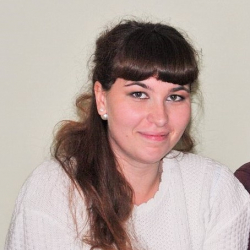| II.
1.
2.
3.
4.
4.1
4.2 | Основная часть урока
Задача I. Ознакомление с новой лексической структурой по теме «Image of a young man» и тренировка в употреблении данной структуры на уровне фразы. Постановка задания, стимулирование интереса к нему. Ц.: предъявить новую ЛС в связном ситуативном контексте с использованием изученной лексики. П.: активное слушание. Р.: T – Pls
Подготовка к чтению текстов. Семантизация новых ЛЕ. П.: работа со словарем. Р.: T – Pls
Чтение текстов “Teenagers protest over school uniform” и “Students demand dress code”. Ц.: полное понимание прочитанного. П.: чтение в группах. Р.: P1, P2…
Контроль понимания прочитанного. Ц.: проверка умений ориентироваться в прочитанном.
ответы на вопросы учителя по содержанию прочитанного. П.: беседа. Р.: T – Cl
ответы на вопросы учителя на основе прочитанного текста. П.: выражение собственного мнения; беседа. Р.: T - Cl |
|
We continue our lesson and before we start working with texts, let’s get acquainted with some words and expressions from the text.
In exercise 39 on page 18 you should match the words with the definitions and translate them. dress code – a set of rules about what you should wear to take away – to remove something to go ahead – to continue to do something to suppress – to stop yourself from showing your feeling in favour of – to support something/ someone to back – to support a person or an idea that your believe is right logo – a symbol that represents an organization or a company plain – simple without no decoration brand name – the name that a company chooses for its product trendy – extremely fashionable
Well, and now it’s high time to start working with texts. Work in 2 groups. Students from one group read text A “Teenagers protest over school uniform” and fill in the information in the following table. Students from another group do the same with text B “Students demand dress code”.
Now answer to my questions: 1. Were the students invited to express their opinion? 2. Did the students support the idea? 3. Did the parents support the idea? 4. What arguments did they give to support their opinions?
Good, and now return to your “home” groups and exchange the information with your classmates. Be ready to discuss the questions after the texts. Do you agree that a uniform suppresses students’ individuality? What do you think students should wear at school? Why? Who should decide what to wear/ whether to wear a uniform? Why do you think so? Should a school uniform be fashionable? |
Group 1: Yes. Most of the students were against wearing the uniform. No. They wanted to dress in a different way. Yes. The parents wanted their kids to get dressed in the same clothes because it makes no difference between the personalities. Group 2: Yes. Most of the students support the idea of wearing a dress code at school. No. The parents said that it was too expensive and their kids wear the dresses they can afford.
Yes, I do, because everybody looks the same and you don’t have your own style/ No, I don’t. I think clothes cannot suppress students’ individuality. I think students should wear a school uniform in order to have a sense of belonging to a school/ To my mind, a school uniform is not important, students can wear plain not bright clothes at school. In my opinion, students should decide what to wear at school, because only they can feel and understand what clothes are comfortable for them/ I think the director should decide what to wear/whether to wear a uniform, because he is the leader of the school and can take serious decisions. I think, no it shouldn’t, because some fashionable clothes may distract students from their study/ To my mind, a school uniform should be fashionable so that students look trendy. |
Учащиеся соотносят слова и словосочетания с их дефинициями.
Учащиеся работают в двух группах, каждая из которых читает свой текст. |

















